Tuesday Triage #77
- TUESDAY TRIAGE #77 by Vadim Drobinin
- On getting back
- Things I enjoyed reading
- 1. How We Make Sense of Time by Elizabeth Dias
- 2. An Algorithm for Passing Programming Interviews by @mmalisper
- 3. How I built a WFH Shed by @eduardosasso
- 4. The Thinner Book: Atomic Habits by James Clear by Chris Behan
- 5. Is Bluetooth holding back Apple's AirPods? We asked the man who made them by @TomParsons
- 6. Your attention didn’t collapse. It was stolen by Johann Hari
- 7. The Burning Desire for Hot Chicken by Danny Chau
- 8. A persistent denial of service vulnerability affecting iOS by Trevor Spiniolas
- 9. The 7 Safest Mushrooms to Forage and Eat by Bill Heavey
- 10. A Guide to Twitter by @tasshinfogleman
- Things I didn't know last Tuesday
- 1. Cullet picker
- 2. Airbus Beluga
- 3. 'B' in 'Debt'
- 4. Donating $100 saves more animals than going vegan
- 5. Chia Pet
- 6. Teapot effect
- 7. List of games that Buddha would not play
- 8. Thousands of coma patients may be conscious
- 9. Banana bag
- 10. Rabbit starvation
- Book of the week
- Thank you and see you in a week!
TUESDAY TRIAGE #77
by Vadim Drobinin ¶
Your weekly crème de la crème of the Internet is here!
04.01.2022 (read in browser)
-
Intro
Whatever is on my mind this week. -
Things I enjoyed reading
Ten-ish articles I found worth reading. -
Things I didn't know last Tuesday
Ten-ish facts I didn't know when I wrote the previous edition. -
Book of the week
Some thoughts on the latest book I've read.
I didn't write a year-in-review post this time (as I didn't in 2020) but I shared a small summary of the most eye-catching things I learnt in 2021. It's a simple collection of 52 trivia, one from each of the last year's newsletters, so if you are following this adventure for a long time you won't find anything new.
On getting back ¶
I grew up in a country that celebrates the New Year's Eve for two weeks in a row, and up until my early twenties I didn't even think that it might be different.
Here in the UK it is quite different indeed, and even though most take a few days off here and there, and the overall easy-going mood lasts for a few weeks, getting back to work feels way less painful.
That'd be the topic for the next week's edition though, as today I am looking at some of the cooking endeavours I had last week.
Everything starts with oysters: I don't enjoy them often, and when I do I prefer to have them shucked already.
This time I thought of making a few odd dishes, so couldn't show up to a market stall with a sous vide and a blender, so I got quite a few to experiment at home despite not being too successful at shucking them myself in the past.
However, after a few fresh scars and a slight fear of all things oyster-like I managed to bring my time down from a few minutes per oyster to 20-30 seconds. A great lifehack is to blanch them at 60ºC for a few minutes: not long enough to cook, but more than enough to make everything easier.
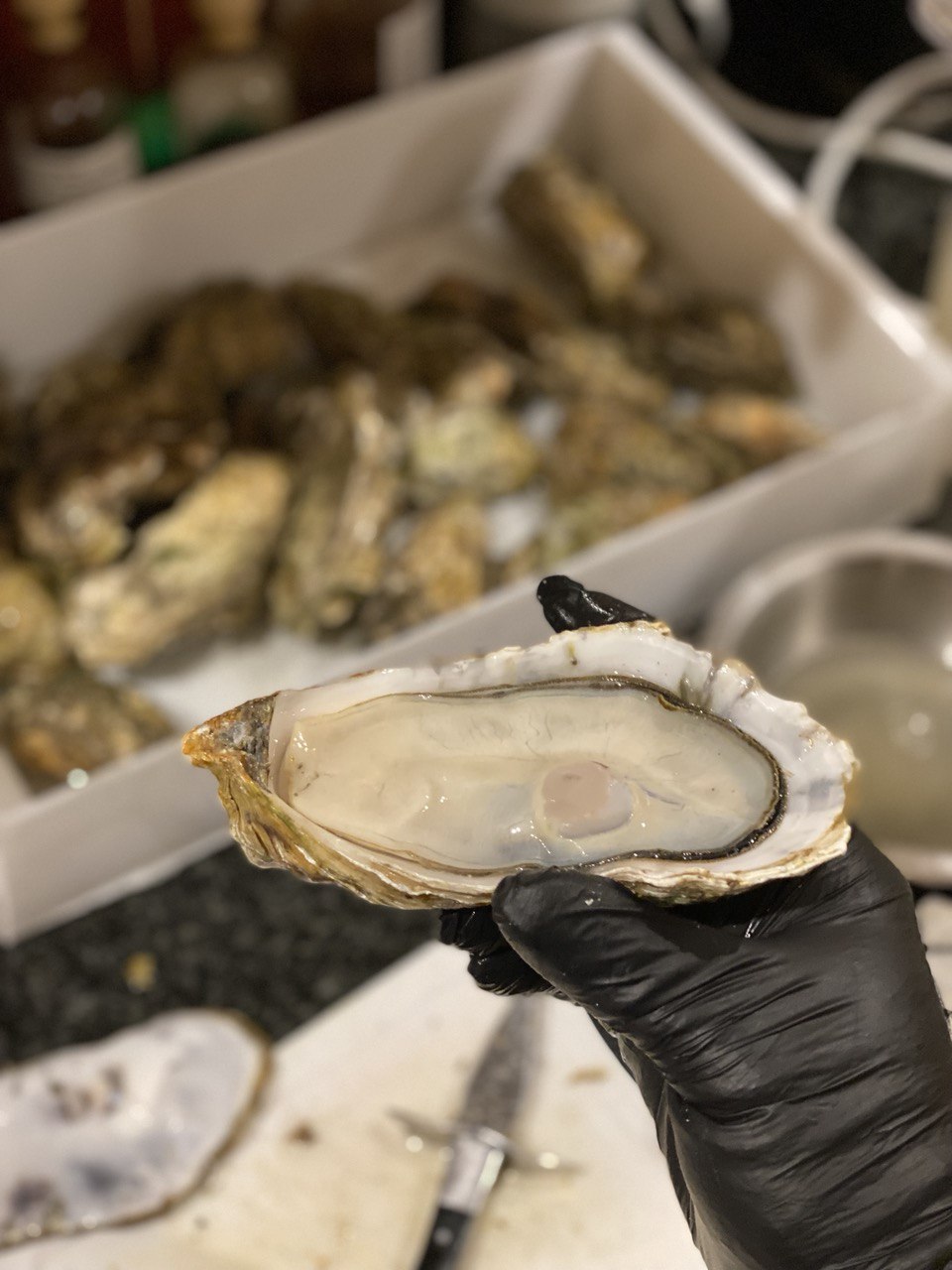
I didn't find much of a taste difference doing a blind tasting, but the texture gets slightly more plump. I served most of them with watermelon granita:
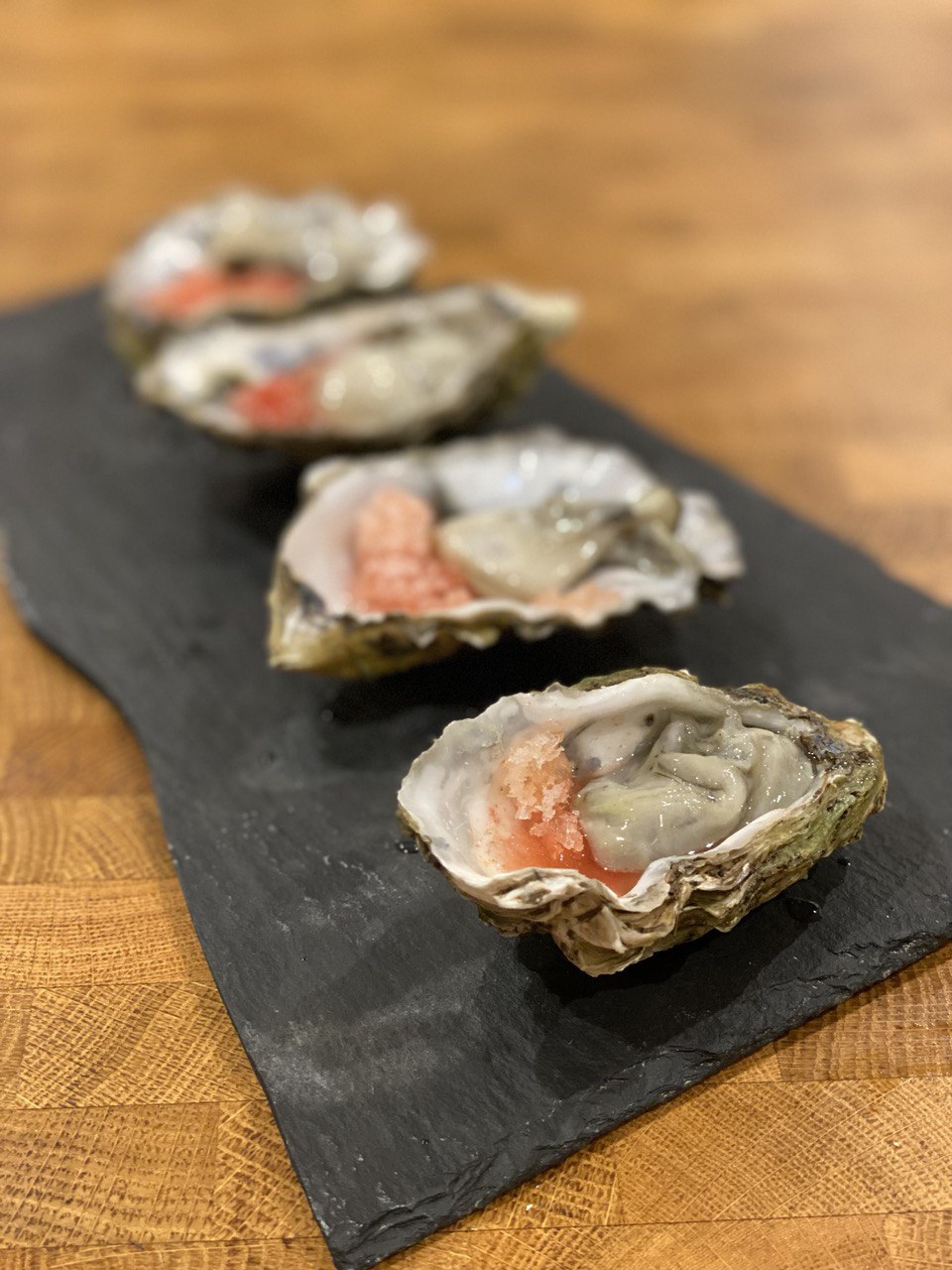
And the rest was either deep-fried or turned into oyster mayo and served together:
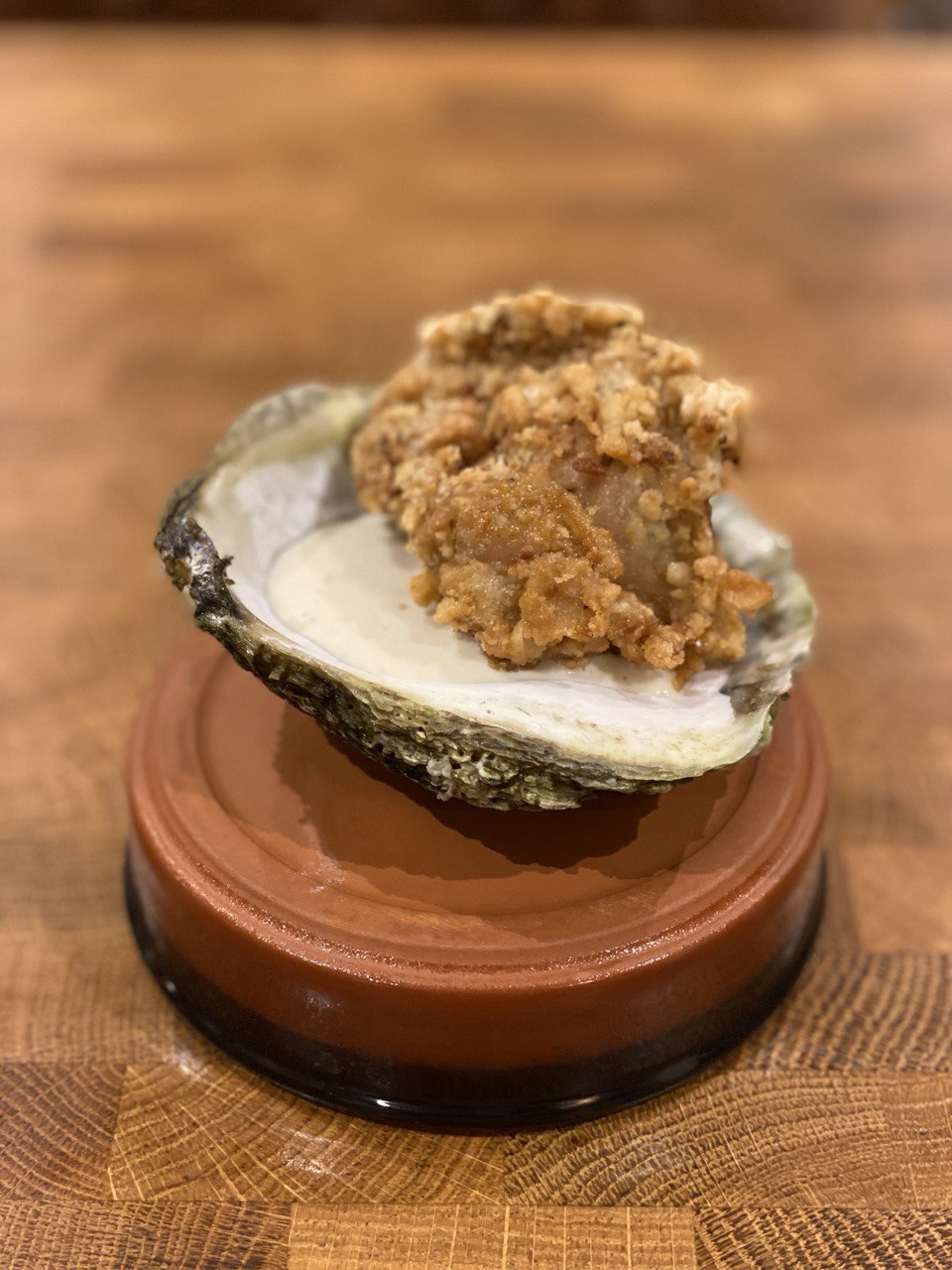
Another dish I cook every New Year is Beef Wellington. Last year I did it in sous vide, had a smaller cut of beef, and skipped a few steps, but this time went for the classic version instead, although duxelles had some white truffle oil to amplify the flavours:
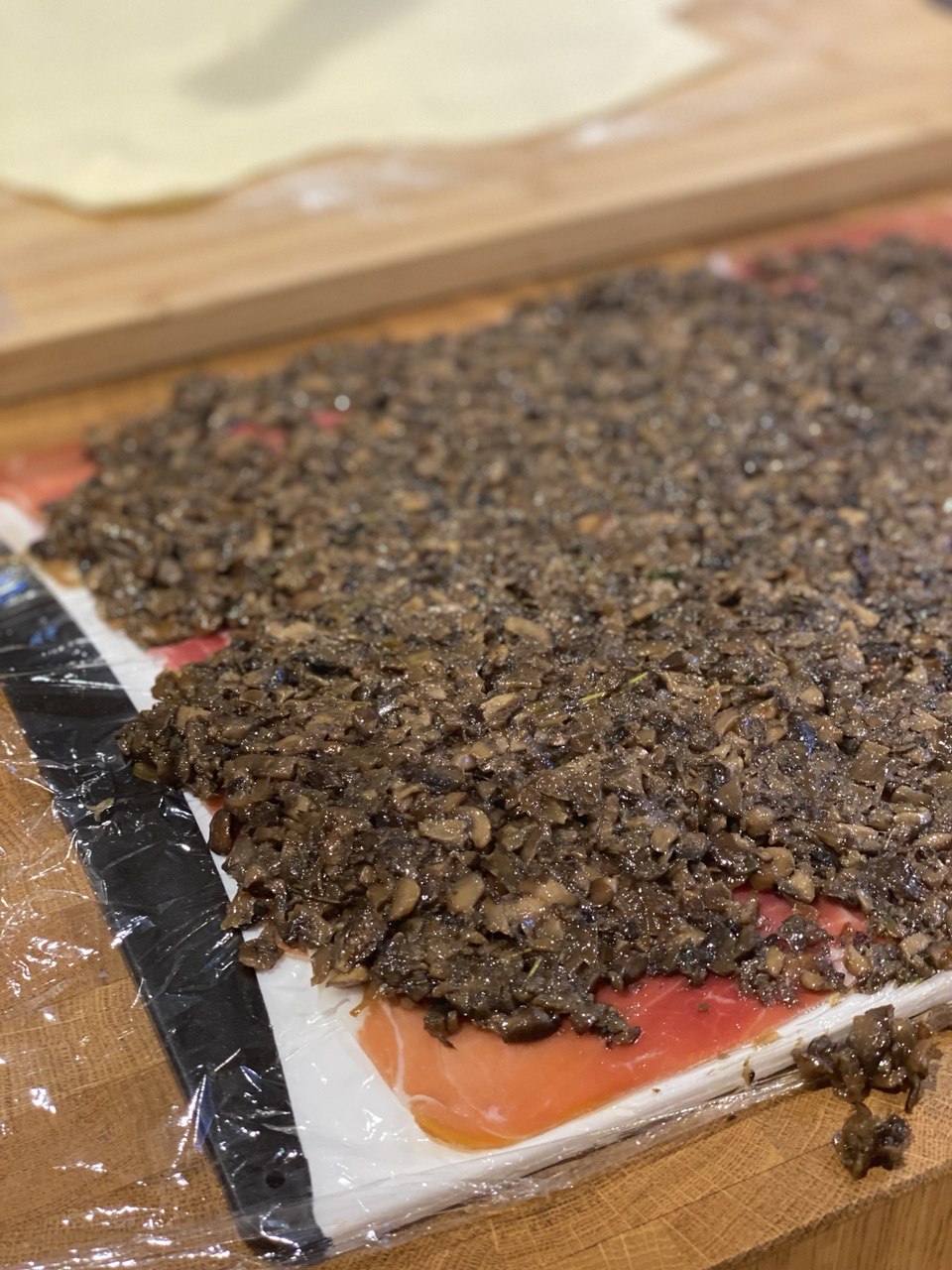
Also I finally got the lattice right:
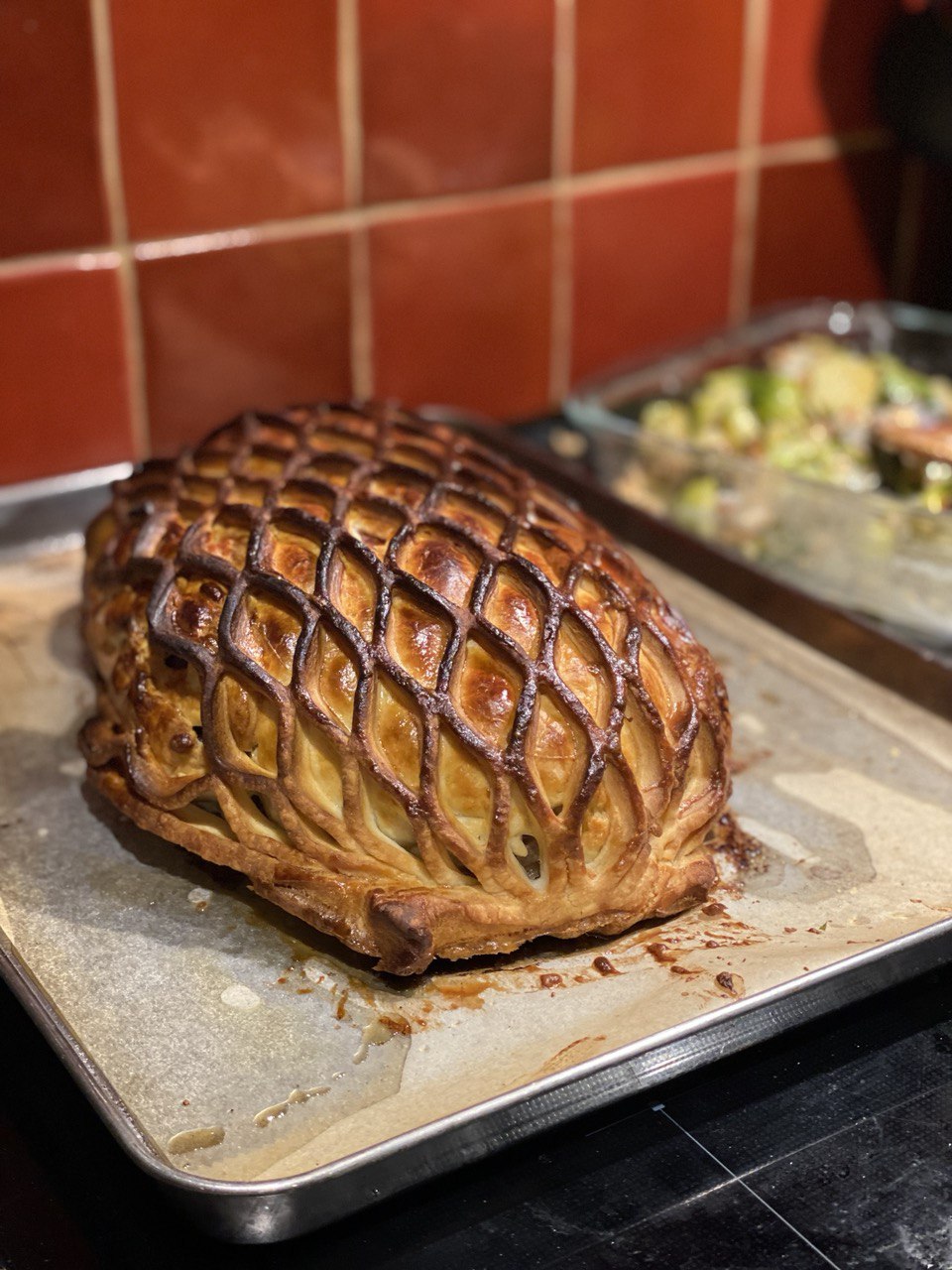
And yet the beef was a bit overcooked comparing to the one I'd get in sous vide.

Last but not least, one of the staples of the New Year's Eve celebrations of my childhood is caviar.
Despite common believes, it is not that hard to find here but the quality is mostly mediocre. You could slightly fix it my washing the roe: put 100 g of caviar into a bowl, cover with filtered water (it will turn milky), stir carefully and then drain through a sieve. Remove broken pieces and repeat all steps a few more times. Then dry the caviar on a piece of paper towel and mix with a 1/4 tsp of a neutral oil. It will have a way more pronounced flavour and way less bitterness from all preservatives it was floating in:
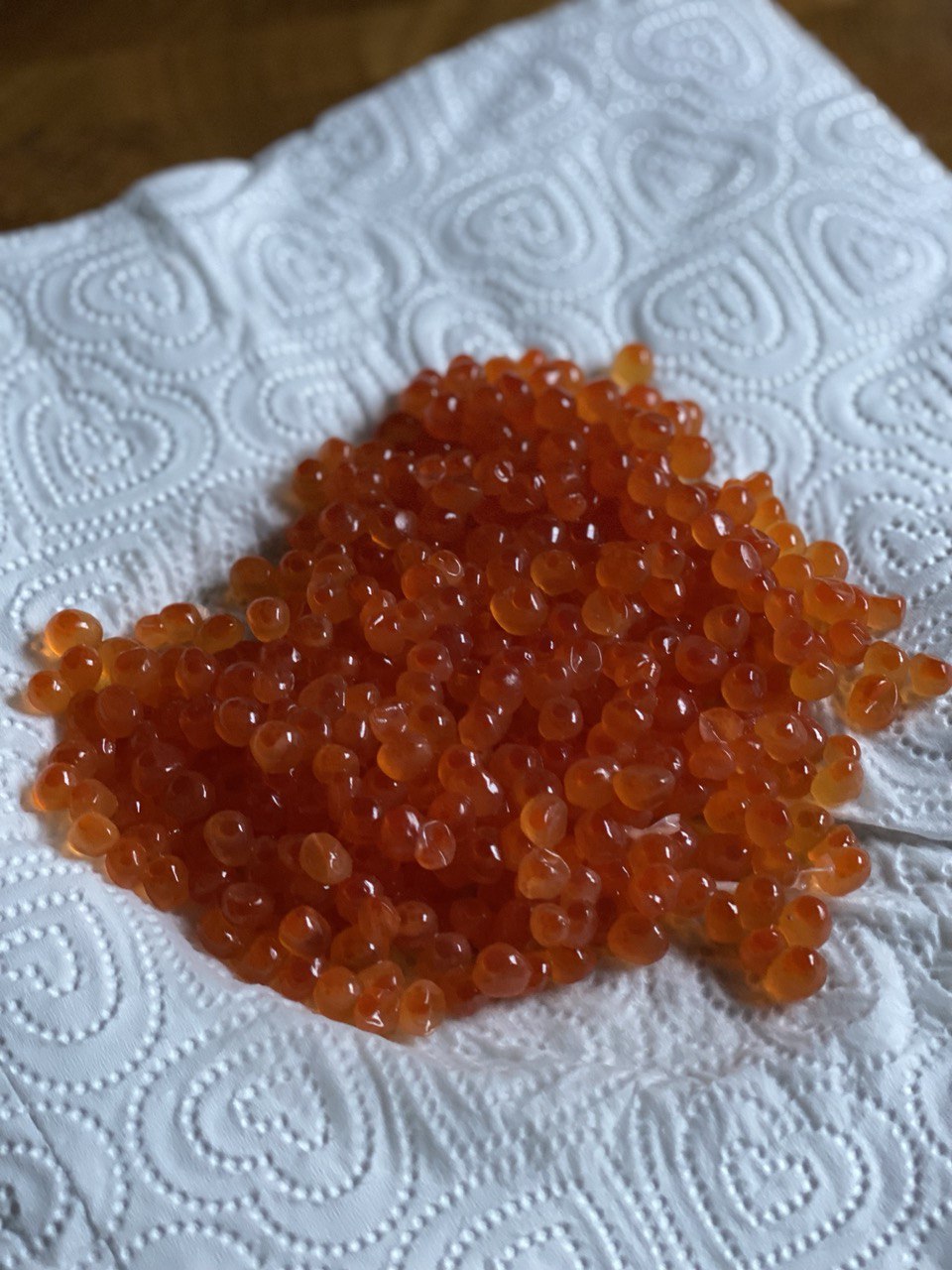
Not much of a point trying it with freshly salted caviar, obviously.
Things I enjoyed reading ¶
1. How We Make Sense of Time by Elizabeth Dias ¶
This is somewhat related to the story about weeks being the only artificial way to measure time, but from a slightly different perspective:
Time is a mystery humans have grappled with across cultures and centuries, often with ritual as our guide. January traces to Janus, the Roman god of doorways and beginnings. The ancient Babylonians charted the course of Venus, dating the dynasties of kings. The Greeks had Chronos, the god of time, and for many Hindus time was associated with Kali, who doubled as the goddess of death.
This article is approaching a slightly different problem: is there a need to change something if the time feels lost while the years change? And if so, is it a mental change or a technical one?
2. An Algorithm for Passing Programming Interviews by @mmalisper ¶
Overall I am quite sceptical about the state of programming interviews these days. There are a few things I am quite cautious about: enforcing seniority constraints and asking to solve algorithmic challenges.
The former is a topic for a separate rant, but the latter is widely spread across FAANG (MANGA?) companies and all those attempting to join the list one day.
This post gives a good heuristic for passing those interviews, and what's rare it also could be applied to problem solving in general.
That leaves just hash tables and linked lists. If we go through the common use cases for hash tables, there doesn’t appear to be any way to apply them to the problem. We don’t need to quickly lookup different objects and we don’t need to partition a list of objects into different groups. That means we can cross off hash tables from the list.
The only data structure remaining are linked lists. Looking at the use cases the only two are for a stack and a queue. Can we use either of those to keep track of how many times a function has been called in the last minute? Yes!
The only step it is somewhat missing is the actual condensing of a human-readable question ("... there are X houses, and a postman wants to visit...") into a problem ("where given a length X, the task is to decide whether the graph has a tour of at most X"), but that comes with practice and is definitely harder to learn by reading.
3. How I built a WFH Shed by @eduardosasso ¶
I love building things from scratch, whether it's coding, soldering, or 3D-printing, but carpentry is still on my list of hobbies to explore. It looks moderately complicate but way less so comparing to the times when YouTube didn't have videos on all possible ways to hold a hammer. It also produces somewhat fun artifacts:
Time to paint! First, I started by caulking everything, sealing all the gaps, and making everything smooth. Painting is my least favorite thing to do; all the prepping you need to do beforehand is pretty dull, so for that task, my wife came to rescue me again. We pretty much got it done in a weekend using two coats of paint. We used a single gallon of flat black for the walls and side trims, and one quart of flat white in the top trims. The idea was to make just the white door stand out in a minimalist look, internally we used one coat of clear polyurethane on the plywood mostly just to protect the panels since it looks pretty cool bare as it is.
I don't really need a WFH shed, which is a shame, but I might as well install one just to watch horror movies without disturbing my wife.
4. The Thinner Book: Atomic Habits by James Clear by Chris Behan ¶
Book reviews and summaries are an interesting affair. They need to be detailed enough to convey the author's thoughts and ideas without bias, but also not too bloated to avoid turning into an essay.
They also should be critical enough to give both pros and cons, but unbiased too as the reader should be able to make their own impression.
Here the post covers a book on building good habits and getting rid of the bad ones, but also touches on time management and overall lifestyle changes:
The inversion of the fourth law of behavior change is to make it unsatisfying. The more painful a behavior the more likely we are to avoid it. The trick to stopping our bad habits is to make their consequences occur as soon as possible, be clearly visible, and be more painful than their worth. Imagine if you were instantly issued a speeding ticket every time you sped. This would surely squash your habit of joyriding, as the cost of the ticket would far outweigh the momentary thrill of speeding.
And this review is a good, as I got the urge to read the book myself, and yet got enough action points in the meantime.
5. Is Bluetooth holding back Apple's AirPods? We asked the man who made them by @TomParsons ¶
The title is obviously misleading (this is an interview with a VP), but it has some insights into how complex is the AirPods' spatial audio system, and how limited is the protocol they're using.
The aim is for Spatial Audio to sound natural and convincing, but that apparently isn’t straightforward. Given free, three-dimensional rein, “you have to take into account the position of your virtual speakers in space, so how far are they are from you, and the angle that they are in space, things like reverberation time – so you need to choose whether you want your thing to sound like a cathedral or a very small room with lots of carpet and curtains in and things like that. You need to think about decay times of the sound, channel gains and so on. And that’s a really artistic choice”.
I didn't notice much of a difference yet, but to be fair most of the songs I listened to were recorded way before the feature support. Maybe it's the right time to try again.
6. Your attention didn’t collapse. It was stolen by Johann Hari ¶
Another alarming look into the way social media in particular (and modern technologies in general) affected the way we concentrate:
It means that if you check your texts while trying to work, you aren’t only losing the little bursts of time you spend looking at the texts themselves – you are also losing the time it takes to refocus afterwards, which turns out to be a huge amount. For example, one study at the Carnegie Mellon University’s human computer interaction lab took 136 students and got them to sit a test. Some of them had to have their phones switched off, and others had their phones on and received intermittent text messages. The students who received messages performed, on average, 20% worse. It seems to me that almost all of us are currently losing that 20% of our brainpower, almost all the time.
This research somewhat proves that makers vs managers schedule is a real thing, and switching context all the time comes at a price of one's productivity. If only managers actually kept that in mind.
7. The Burning Desire for Hot Chicken by Danny Chau ¶
I love hot chicken as much as the next guy, but where does it come from? Here is at least one version:
Back in the 1930s, there was a man named Thornton Prince, who had a reputation around town as a serial philanderer. His girlfriend at the time, sick of his shit and spending her nights alone, decided to do something about it. After a long night out, Prince came home to breakfast. His girlfriend made fried chicken, his favorite. But before serving it, she caked on the most volatile spices she had in the pantry — presumably cayenne pepper and mustard seed, among other things. If it didn’t kill him, at least he would reevaluate his life choices. He didn’t do either — Prince fell harder for the over-spiced piece of chicken than he did for any woman he’d ever courted. Prince implored her to make it for his family and friends — they all loved it, too.
The article is actually not about mere history but also about how the heat in food changes our perception by unleashing a wave of endorphins, which lasts longer than the pain, which kind of explains a lot.
8. A persistent denial of service vulnerability affecting iOS by Trevor Spiniolas ¶
An interesting attack vector with HomeKit, which doesn't seem to be fixed yet:
When the name of a HomeKit device is altered, the new name is stored in iCloud and is updated across all other iOS devices signed into the same account if Home Data is enabled. iOS frequently updates this data without any user interaction. Once a device with an affected iOS version installed loads the new data (locally or from iCloud), one of two scenarios outlined below may occur. (A string length of 500,000 was used in testing.)
Most of these scenarios are not dangerous in the sense that the data is not getting stolen, just lost, which shouldn't be a problem for those with regular backups. But how many people out there actually do have regular backups?
9. The 7 Safest Mushrooms to Forage and Eat by Bill Heavey ¶
Despite enjoying foraging in my childhood, it's been quite a while. Mostly because I am not as confident in local flora, but also the overall simplicity of buying already harvested food plays its part. This article is quite reassuring though, as it claims that there are mushrooms without poisonous lookalikes.
Another good mushroom for beginners, oysters are found on standing dead trees or logs. The name comes from the mushroom’s ivory color and shell-like appearance, which resemble an oyster. They usually grow in groups. They have a longer season than many mushrooms and can be found both fall and spring, and sometimes even in winter. They’re prized for their velvety texture and unique flavor, which can range from mild to strong. I have a friend who claims they’re the best mushroom to pair with venison. There are no toxic look-alikes, but you do want to avoid Lentinellus ursinus, the bear Lentinus, which is known as “the only mushroom that raccoons will spit out.” It won’t hurt you; it just doesn’t taste very good.
Oyster mushrooms actually could be grown at home, and I've seen some people doing it successfully using spent coffee grounds. Sounds like a fun weekend project!
10. A Guide to Twitter by @tasshinfogleman ¶
Despite being on Twitter for more than twelve years, there is still a lot to learn. I post way less than before: partly because I managed to gather around people whose interests mostly intersect with mine only when it comes to programming.
One of the best gifts I give myself as a writer is prolific tweeting. When I’m ready to write a longform piece about something, I have a handful of tweets and threads about the same topic. Twitter search lets me find, choose, and copy/paste the relevant material. This paragraph, for example, was originally a tweet.
Maybe it is worth getting back to be more proactive on there.
Things I didn't know last Tuesday ¶
1. Cullet picker ¶
Among the oldest UK jobs, there are records of folks collecting used glass for recycling.
Cullet-pickers were another type of scavenger - this time of used glass. It could be sold to glassmakers who would use it in their furnaces to make a new batch - the addition of cullet makes the melting temperature lower.
The article doesn't mention if there were paid on a weekly basis or by the glassmakers, but I remember it being a thing in Russia even two decades ago.
2. Airbus Beluga ¶
One of those planes with a properly thought-through name:

The Airbus A300-600ST (Super Transporter), or Beluga, is a version of the standard A300-600 wide-body airliner modified to carry aircraft parts and outsize cargo. It received the official name of Super Transporter early on; however, the name Beluga, a whale it resembles, gained popularity and has since been officially adopted.
It is also a rare example of an officially adopted nickname.
3. 'B' in 'Debt' ¶
I am slightly concerned now that I was mispronouncing the word for quite a while, but seems like I am not alone (or at least I have a good enough reason for the mistake).
They knew that the word had its origin in the Latin word debitum, and they thought it should pay homage to that word—and they had the wherewithal to slip a "b" into both the English and French versions of the word. Despite the fact that the "b" had never been pronounced in either language, the spellings became established.
At the same time it got me wondering how many other words have letters brought in as tombstones to ancient Latin or Greek?
4. Donating $100 saves more animals than going vegan ¶
I thoroughly enjoy when science magazines confirm my suspecions aboud vegans, and this one just adds up to the total sum:
A meat-eater, then, who donates $100 to the Humane League is saving 350 animals—over three times as many animals as they would maintaining a vegan diet for one year. There are other estimates of the effectiveness of this and related charities, but whatever numbers you use, the result is pretty stark—the animals killed or saved by altering your diet is pretty small compared to the good you can do for animals with a small donation.
There is obviously way more to the calculations behind the quote, but overall it compares how many animals on average meat-eaters eat per annum (hence how many could be saved by going vegan) with the amount a donation could save.
To some extent it gives me a refreshing thought of buying my way towards doubling the amount of meat I can morally afford.
5. Chia Pet ¶
Necessity is the mother of invention, they say, and I wonder what necessity was behind this... device:
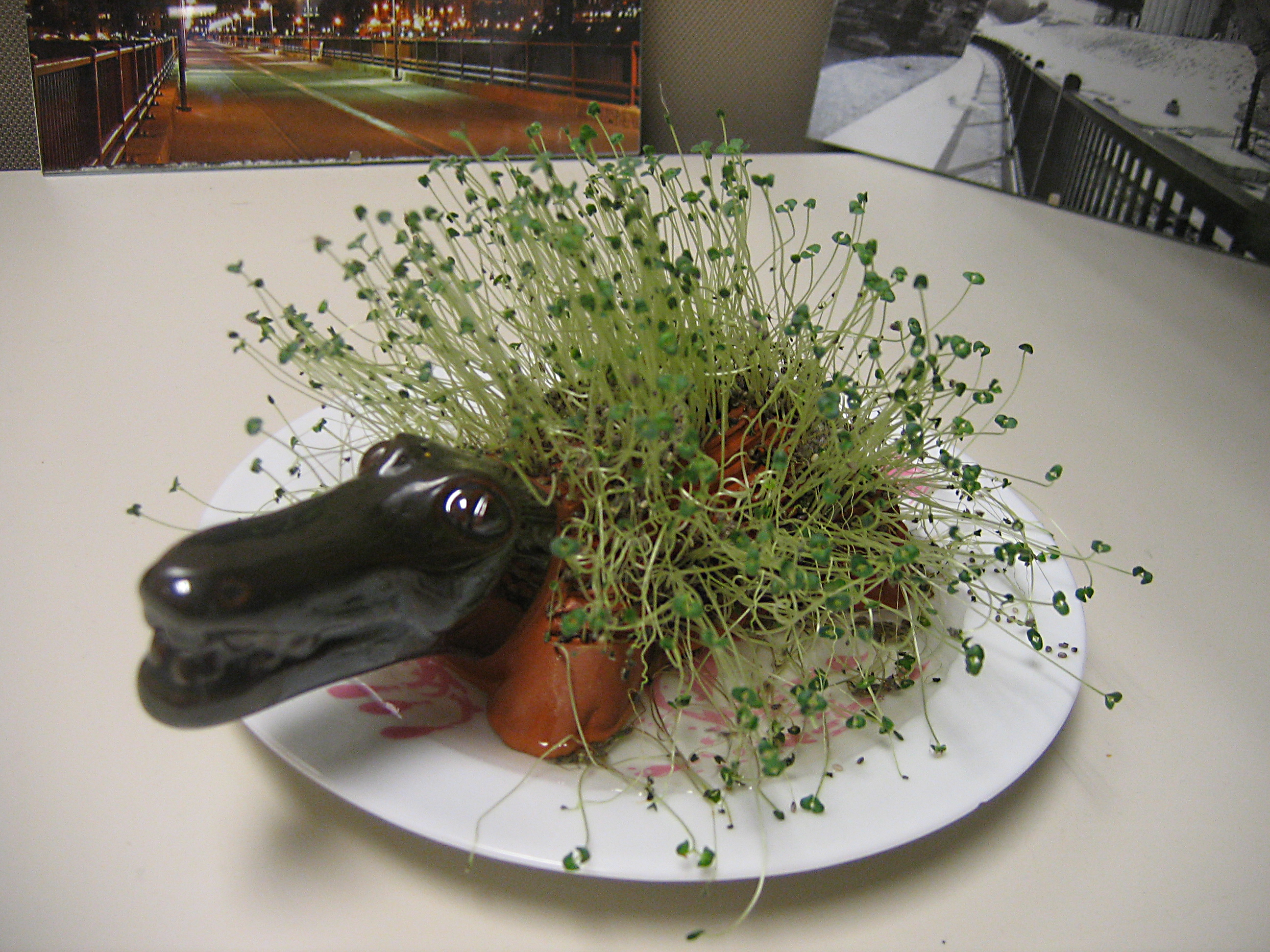
Chia Pets are American styled terracotta figurines used to sprout chia, where the chia sprouts grow within a couple of weeks to resemble the animal's fur or hair.
Looks pretty cool if cut accordingly, but doesn't it ruin the whole point?
6. Teapot effect ¶
Australian and British researches claimed to finally come up with a theory of the dribbling teapot effect – the one that considers forces at play when a drop forms at the edge of the teapot spout that then wets the underside of it:
As a rule of thumb, the higher the wettability, the more the fluid ‘sticks’ on the underside and the more the point of three-phase contact or detachment is remote from the plane wall on top. In the authors’ minds, the present analysis rationalises for the first time how a high-Reynolds-number flow negotiates the formation of free streamline with due rigour.
Pretty sure that what they call "experiments" was just drinking lots of tea.
The practical outcome is a suggestion to pour at a faster rate. Well, thanks a lot.
7. List of games that Buddha would not play ¶
Seems like Buddha was quite a party spoiler:
The Buddhist games list is a list of games that Gautama Buddha is reputed to have said that he would not play and that his disciples should likewise not play, because he believed them to be a 'cause for negligence'. This list dates from the 6th or 5th century BC and is the earliest known list of games.
He didn't like Charades though, at least can't blame him for that.
8. Thousands of coma patients may be conscious ¶
A scary plot for a bunch of horror movies might be reality based on a few recent researches:
By changing his pattern of brain activity in the scanner to indicate a ‘yes’ or a ‘no’, Scott was able to tell us that he knew where he was, how long he’d been there, what he enjoyed watching on TV, and whether or not he was in any pain (he wasn’t). Nevertheless, at the bedside, Scott remained non-responsive whenever he was examined by his doctors and care staff.
On the brighter side, this finding might help to find ways to bring those people back.
9. Banana bag ¶
For some reason I see folks casually using IV bags at home here and there, which either means I am getting older, or this is just a new trend. Either way, here is a hilarious nickname for the most common of them:
A banana bag (or rally pack) is a bag of IV fluids containing vitamins and minerals. The bags typically contain thiamine, folic acid, and magnesium sulfate, and are usually used to correct nutritional deficiencies or chemical imbalances in the human body. The solution has a yellow color, hence the term "banana bag".
I am slightly disappointed that there are no proper researches on them being cures from hangovers, but who knows?
10. Rabbit starvation ¶
Eating lots of protein on its own is a dangerous affair:
Commonly called “rabbit starvation” or “mal de caribou” but officially called “protein poisoning,” it happens when you eat too much protein without enough fat and/or carbohydrates, which leaves your stomach full but your body malnourished. Excessive protein can overwhelm your liver and kidneys, leading to excess ammonia, urea, and amino acids in your blood. It’s a serious condition that can kill you.
The origins of the name are said to be from the time when people would hunt only rabbits and eat only their (very lean) meat, which led to sad outcomes. Don't forget to pair rabbits with something else, e.g beef steaks.
Book of the week ¶
I was going to start the year by finally getting to the books not related to cooking.
Seems like I already have failed.
To be fair, Baltic by Simon Bajada only looks like a cookbook, but those post-Soviet recipes mostly evoke nostalgia or tell stories of the past century rather than inspiring to cook.
Given its position at the crossroads of so many cultures, there are a number of small subtleties that differentiate Lithuanian cuisine from that of its Baltic neighbours. Here Nordic cuisine has less influence, with culinary inspiration more likely to be drawn from nearby Poland. Due to its relative lack of coastal shoreline and the capital’s distance from the sea, seafood is not quite as commonplace as it is throughout the rest of the region – though great-quality fish can still be found and is highly prized – while its southerly location enables a slightly different range of produce to be grown (I remember eating wild mint with honey and cheese in a garden, for example – something that I can’t imagine doing in Estonia).
That being said, most recipes indeed are familiar and yet hard to imagine in Europe. To name a few, "curd chocolate" bars were (and are) one of my favourite snacks, and "cucumber with honey" was one of the most common toppings on sandwiches of my childhood.
At the same time, it's quite interesting to see how certain recipes (e.g "pelmeni") got changed during transition from one country to another. Usually it'd be caused by available ingredients, but even then some dishes look surprisingly odd.
Given that winter is the best time to cook most of those, I might as well give them a try.
Thank you and see you in a week! ¶
If you have any questions, or want to suggest a link for the next newsletter, please drop me a message on Twitter or reply to this email.
Cheers! 🍸